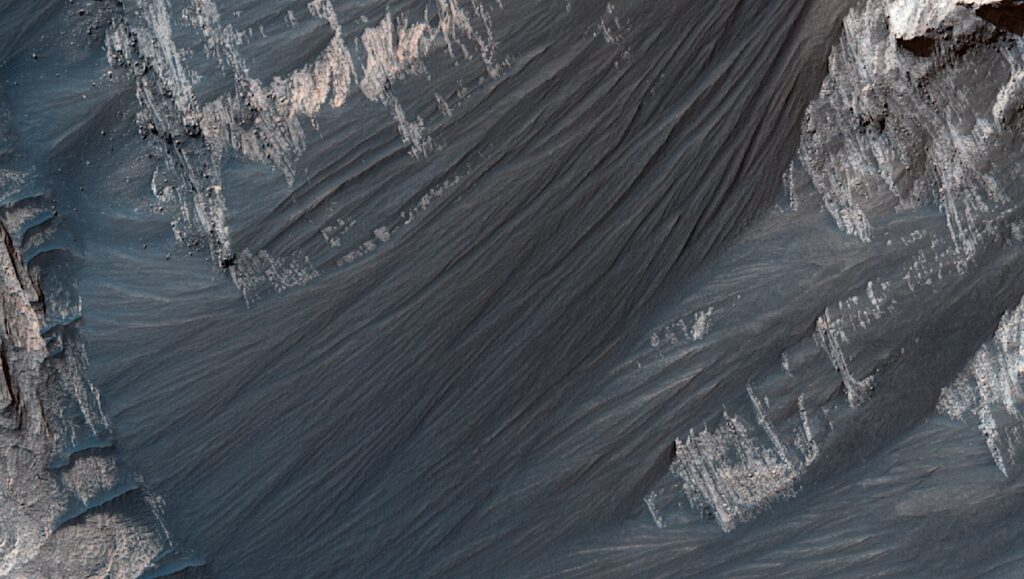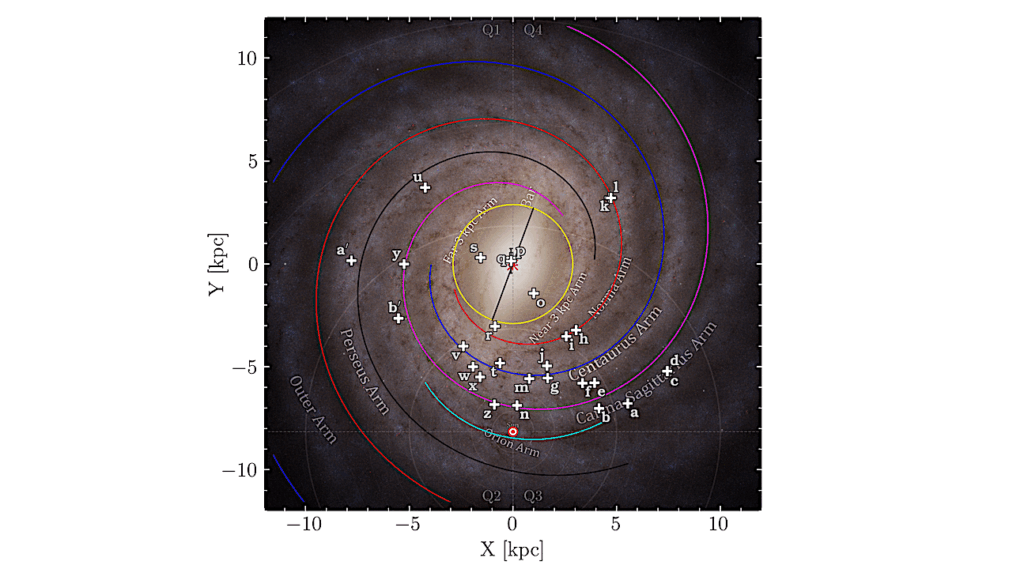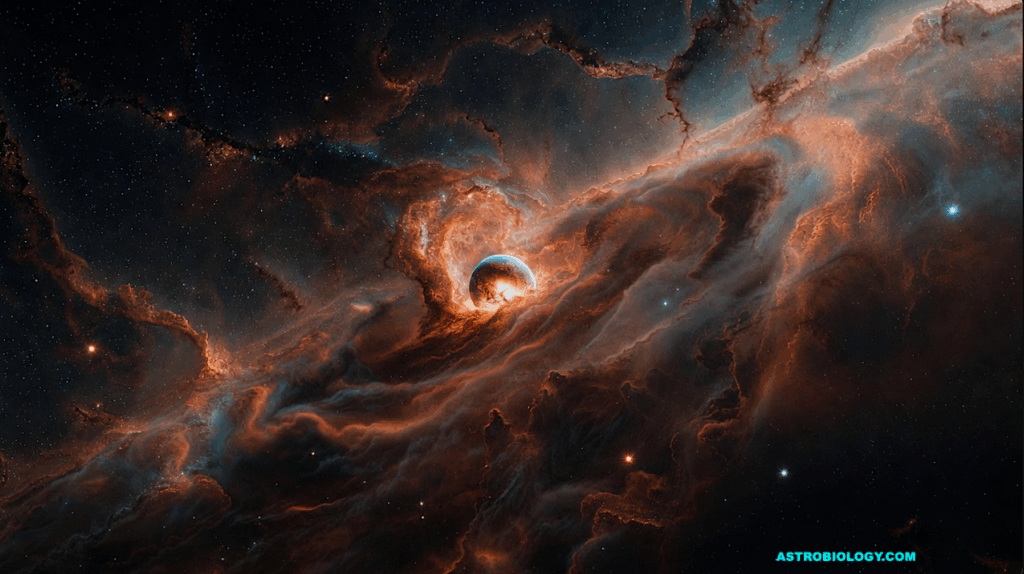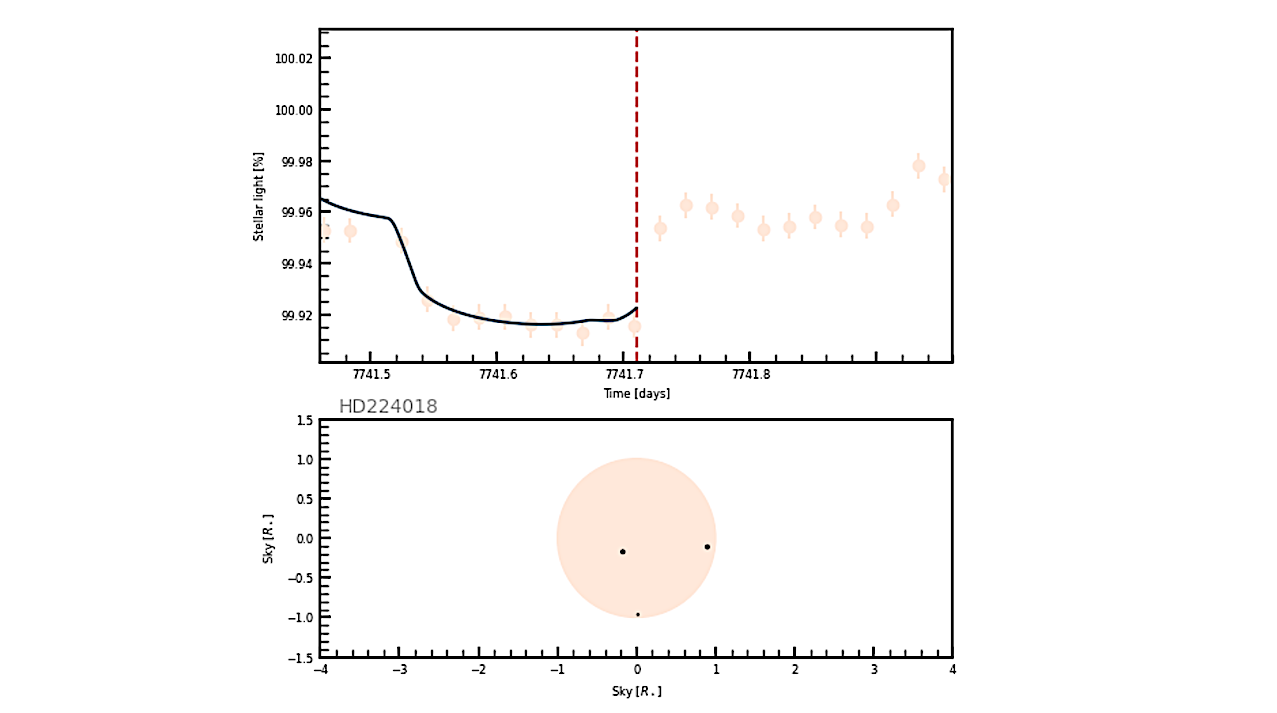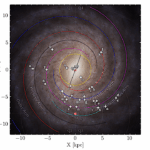Now Reading: Modeling Tails Of Escaping Gas In Exoplanet Atmospheres With Harmonica
-
01
Modeling Tails Of Escaping Gas In Exoplanet Atmospheres With Harmonica
Modeling Tails Of Escaping Gas In Exoplanet Atmospheres With Harmonica


Results from the injection-recovery test for the helium envelope with a variable opacity. The top panel shows the inputted absorbance profiles (red curves), together with the empirically-retrieved absorbance profiles (red points with error bars) for the 2 layer envelope 200 ppm case. The bottom panel shows the injected variable envelope in different shadings of red, with the gray dashed lines indicating the position and shape of the fitted layers. — astro-ph.EP
Exoplanets that reside close to their host stars, and therefore receive substantial amounts of X-ray and ultraviolet radiation, are prone to suffer from strong atmospheric escape.
This can lead to the creation of an envelope of escaping gas along the planet’s orbital trajectory, often referred to as a tail. When transiting in front of their host star, these tails can not only produce larger depths in the transit light curves, but also introduce significant asymmetries between ingress and egress.
Using the publicly available software Harmonica, we present a method to model the light curves of transiting planets surrounded by extended envelopes of escaping gas, and subsequently infer the shape and size of the latter. We apply this method to the JWST NIRISS/SOSS observations of HAT-P-18b, which show pronounced helium tail features in its spectroscopic light curve of the metastable helium triplet at 10830 Å.
Our model reveals that, in order to fit the observed light curve of HAT-P-18b, the planet must possess a trailing helium tail of 15.79+1.14−1.05 planetary radii. We carry out injection-recovery tests to validate the effectiveness of the proposed methodology.
We demonstrate that, with sufficient precision, we would be able to fit a multi-layer envelope to the data, which would provide insight into the relative radial variations in the opacity profile.
Carlos Gascón, Mercedes López-Morales, Shreyas Vissapragada, Morgan MacLeod, Hannah R. Wakeford, David Grant, Ignasi Ribas, Guillem Anglada-Escudé
Comments: 15 pages, 10 figures, 3 tables. Accepted to APJL
Subjects: Earth and Planetary Astrophysics (astro-ph.EP); Instrumentation and Methods for Astrophysics (astro-ph.IM)
Cite as: arXiv:2508.14846 [astro-ph.EP] (or arXiv:2508.14846v1 [astro-ph.EP] for this version)
https://doi.org/10.48550/arXiv.2508.14846
Focus to learn more
Submission history
From: Carlos Gascon
[v1] Wed, 20 Aug 2025 16:57:55 UTC (3,354 KB)
https://arxiv.org/abs/2508.14846
Astrobiology,
Stay Informed With the Latest & Most Important News
-
 01From Polymerization-Enabled Folding and Assembly to Chemical Evolution: Key Processes for Emergence of Functional Polymers in the Origin of Life
01From Polymerization-Enabled Folding and Assembly to Chemical Evolution: Key Processes for Emergence of Functional Polymers in the Origin of Life -
 02Panasonic Leica Summilux DG 15mm f/1.7 ASPH review
02Panasonic Leica Summilux DG 15mm f/1.7 ASPH review -
 03Two Black Holes Observed Circling Each Other for the First Time
03Two Black Holes Observed Circling Each Other for the First Time -
 04How New NASA, India Earth Satellite NISAR Will See Earth
04How New NASA, India Earth Satellite NISAR Will See Earth -
 05And Thus Begins A New Year For Life On Earth
05And Thus Begins A New Year For Life On Earth -
 06Astronomy Activation Ambassadors: A New Era
06Astronomy Activation Ambassadors: A New Era -
07SpaceX launch surge helps set new global launch record in 2024












